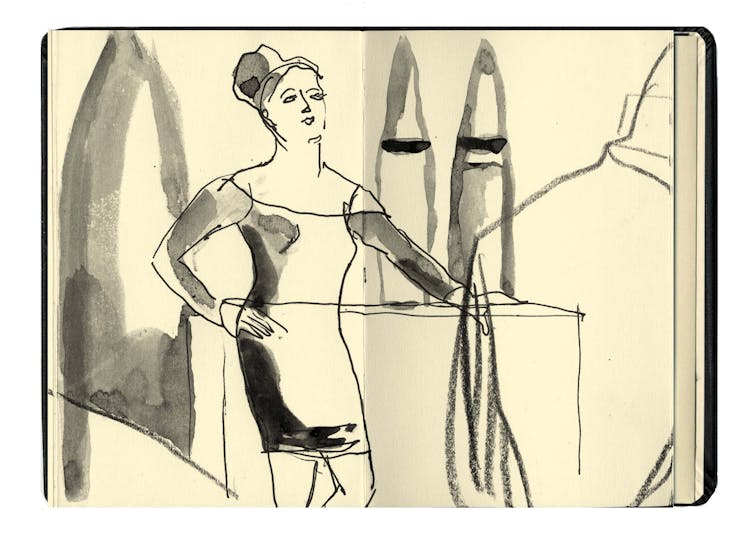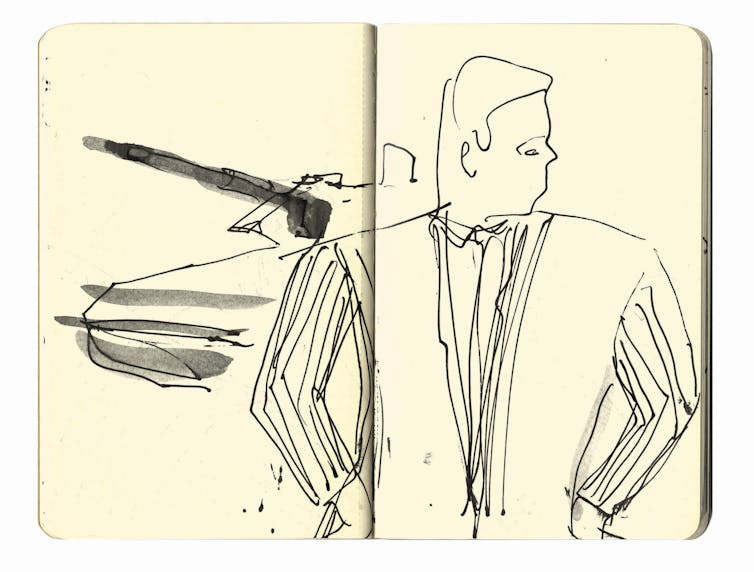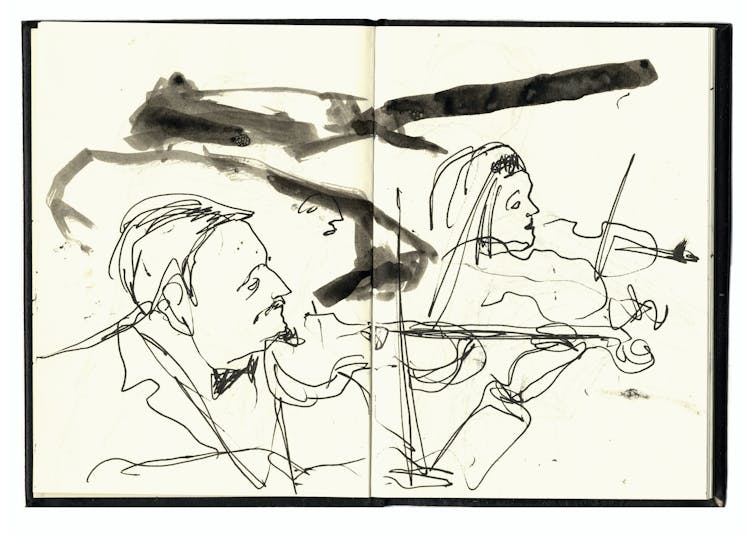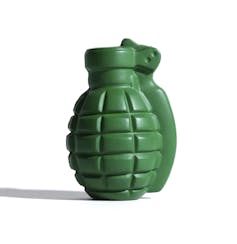There’s a disturbing disconnect between the polite etiquette of arms fairs and the hell that their products create.
JILL GIBBON, LEEDS BECKETT UNIVERSITY
ISRF Early Career Fellow 2017-18

The arms multinational BAE Systems is in the final stages of a deal to sell 48 Typhoon fighter jets to Saudi Arabia, despite mounting evidence of war crimes in Saudi-led airstrikes in Yemen. International humanitarian law prohibits attacks against civilians but the Saudi-led coalition has bombed Yemeni schools, markets and hospitals, killing more than 10,000 people including children, while survivors face disease and starvation with the collapse of infrastructure.
Fragments of bombs made in Britain and the US have been found in the debris of some of these attacks, yet both countries continue to sell arms to the Saudi regime.
Such deals take place in arms fairs, away from the public eye. I have drawn undercover in fairs in Europe and the Middle East for the past ten years, in an attempt to understand how international arms sales are normalised and legitimised. Access is restricted, but I get in by dressing up as a security consultant with a suit, heels, fake pearls, and a sham company. My performance is a metaphor for the charade of respectability in the industry.

Arms fairs emerged from the globalisation of the military industry in the late 1990s. At the end of the Cold War, defence budgets were cut. There was a brief opportunity to convert military production facilities into civil areas such as medical equipment, transport and renewable energy; instead, arms companies merged into multinationals, expanded into security, and focused on a global market. Arms fairs were set up to provide venues for these deals.
The largest, DSEI (the Defence Security Exhibition International) takes place every two years in London, with similar fairs in Paris, Bahrain and Abu Dhabi. Here, weapons are displayed to an international clientele including countries at war, unstable states and repressive regimes.
DSEI welcomes 75% of the countries that the UK Foreign Office has listed as “Human Rights Priorities”, where “the worst, or greatest number of, human rights violations take place”.

Inside a fair, missiles, bombs and bullets are arranged under spotlights; guns are available to try out for weight and size, and to aim at imaginary targets; mannequins pose in camouflage offering private military services and tear gas; tanks are open for viewing. “Lethality” is a sales slogan. Manufacturers boast of the precision of their products, as if war could be refined through science.
As with most advertising, such claims turn out to be exaggerated when the weapons are actually used. Bombing is inevitably inaccurate, compromised by an inbuilt margin of error, malfunctions, mistaken intelligence and the weather. The difference between a combatant and civilian is also increasingly unclear, as Yemen shows. Yet such claims make war more likely.

Many stalls hand out gifts as an alternative to business cards – stress-balls in the shape of bombs, grenades and tanks, branded sweets and pens. A gas mask manufacturer has condoms with the slogan, “The ultimate protection”. Waiting staff hover with trays of wine, beer and grapes, while a string quartet plays Handel and Mozart.

There are also promotions. The BAE subsidiary Bofors has a live satellite link to its weapons testing facility in Sweden where a military vehicle explodes in a cloud of light and metal. Alongside the video screens, bowls are filled with toffees in wrappers saying, “Welcome to hell”. Brochures explain that the Bofors test centre is “Hell for your product, heaven for your investment”. The impact on people of the weapons that pass through the test centre is oddly missing. In an arms fair, missiles are forever products.
See also: Jill Gibbon on ‘Gifts from Arms Fairs’
How to draw this? My drawings veer between caricature and observational methods. Mainly, I focus on the etiquette that gives the industry an appearance of respectability – the handshakes, pinstriped suits, hospitality, and violins. I also draw cracks in the façade – a lewd advance, a rep slumped in a chair with his head in his hands, the continual, desperate drinking. Brecht used the Latin word gestus to describe an attitude that expresses a social role or condition. In his plays, gestures are frozen so they seem strange. Perhaps drawing can be used in a similar way.

Or, perhaps the gifts are sufficient in themselves to reveal the strange amorality of an industry that uses war as a sales opportunity. The BAE Bofors toffees might be intended to convey the impact of a test centre on weapons with the slogan “Welcome to hell” – but sweets are usually meant for children.![]()
Dr Jill Gibbon
Senior Lecturer, Leeds School Of Arts, Leeds Beckett University
Jill Gibbon is a politically engaged artist with research interests in war, art, and aesthetics.